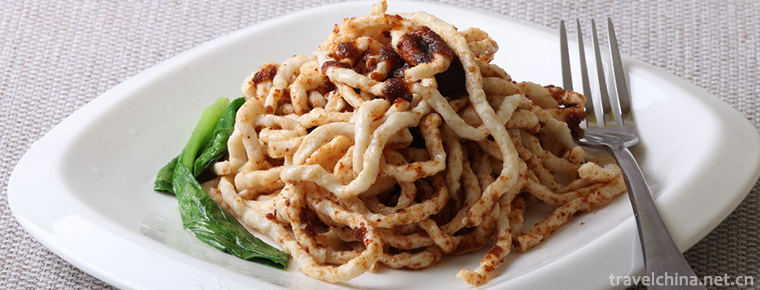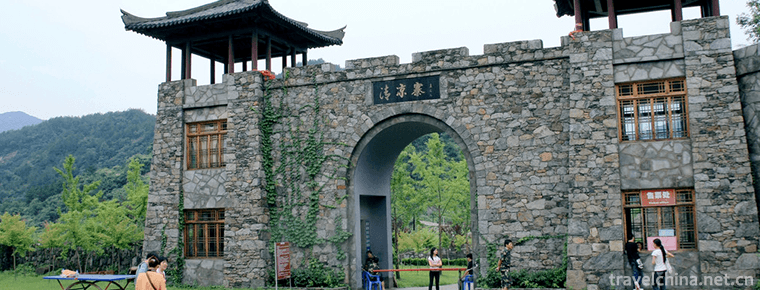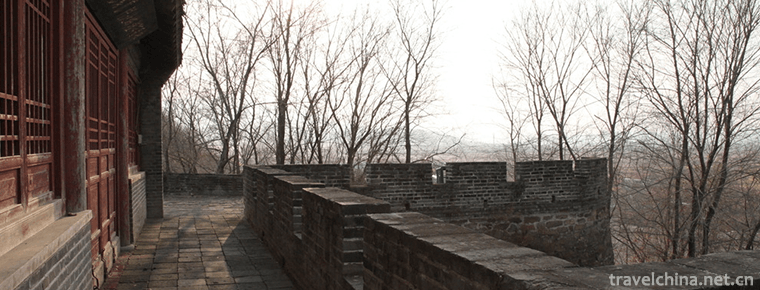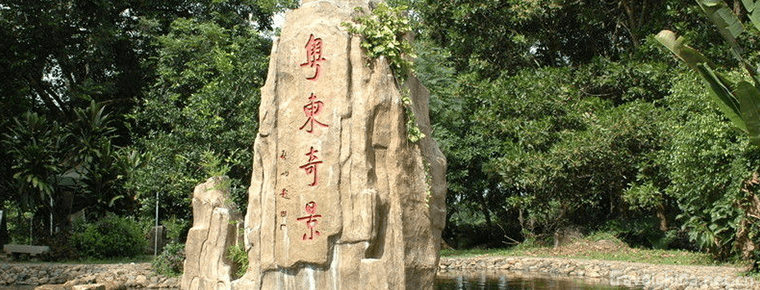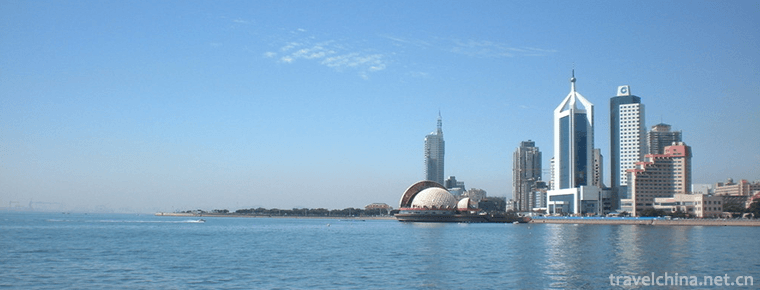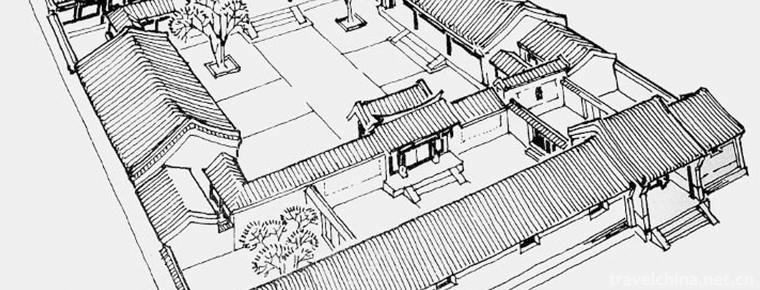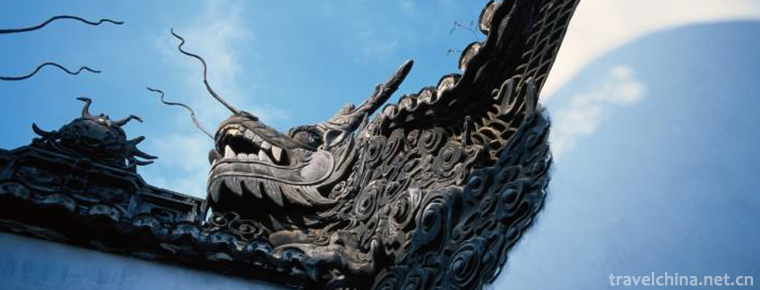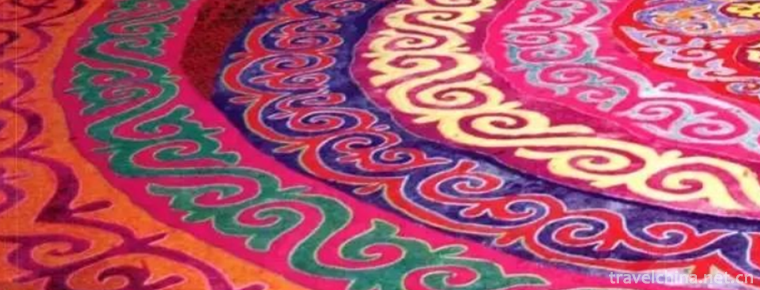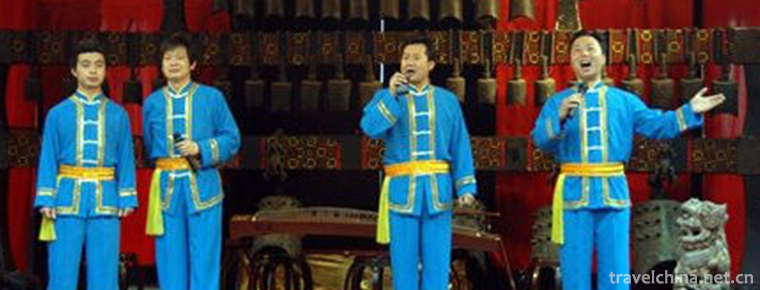Cooking Techniques of Beef and Mutton
Cooking Techniques of Beef and Mutton
Strict raw materials for roasting whole sheep should be two-year-old lambs. Paste made of egg yolk, salt, cumin, pepper, flour, etc. will be applied to the whole sheep after treatment, and the head of the sheep will be hung down in the hot steamed bun pit to roast. The pit mouth is sealed with wet cloth, and can be observed after baking for an hour. The whole sheep can be baked golden and removed.
After roasting the whole sheep, put it in the dining car, put parsley or celery in the mouth of the sheep, and cut the mutton with a knife for eating. In cities and towns, there are roast whole sheep stalls, which are now roasted and sold, specializing in chopping pieces for retail sale. The aroma of roast sheep is so delicious that you can eat the delicious mutton completely.
On June 7, 2008, the cooking skills of beef and mutton were approved by the State Council and listed in the second batch of national intangible cultural heritage list.
Skills
Beef and mutton cooking skills Beijing Donglaishun Group (Donglaishun Shuan mutton making skills, limited liability company, Hongbin building whole lamb mat making skills, Beijing Hongbin building restaurant Yueshengzhai sauce roast beef and mutton making skills, limited liability company, Beijing roast meat making skills, Beijing Yueshengzhai Guanyunpingyao beef traditional processing skills, Muslim Food Co., Ltd., roast sheep skills) Beijing Yueshengzhai Muslim Food Co., Ltd., Beijing Yueshengzhai Muslim Food Co., Ltd., Beijing Jude Huatian Holding Co., Ltd., Shanxi Guanyun Pingyao Beef Group Co., Ltd., Alxa League, Inner Mongolia Autonomous Region.
Bovine and mutton cooking skills (Donglaishun Shuan mutton making skills) - National Intangible Cultural Heritage
The old Chinese name "Donglaishun" was founded in 1903 and realized public-private partnership in 1955. In 1988, Beijing Dongan Catering Company was established with Donglaishun Brand as the core. The company takes full advantage of the old brand and has been involved in the development of chain industry, brand semi-finished products and finished product research and development, which has injected vitality into the sustainable development of the enterprise. In 1996, Donglaishun Chain Headquarters was established, and the old brand Donglaishun embarked on the chain development road of franchising.
The founder of Donglaishun is Ding Deshan, a native of Cangzhou, Hebei Province. In 1903, Ding Deshan spent all his savings to build a shed at the north gate of the Dongan Market and put up the sign of "Donglaishun Congee Shop". Later, Ding Deshan introduced the flavor of instant-boiled mutton into the shop. After careful consideration, he found that instant-boiled mutton was tender and delicious, mainly depending on the choice of ingredients, fine processing and complete sauces. So he dug a famous chef with exquisite knives from Zhengyang Building restaurant outside the front door with heavy gold to help the workers pass on their skills. This master of mutton-cutting has regulated the origin of the sheep, the parts of the meat and the methods of meat-cutting. The cut mutton slices are laid in blue and white porcelain dishes. The patterns on the dishes can be seen through the meat. It is a sight for Master Kan Donglaishun to cut meat. Eating Donglaishun instant-boiled meat is a kind of enjoyment. Donglaishun enjoys a reputation as a capital city.
Over the past hundred years, while adhering to the tradition, Donglaishun people have made full use of all their strengths and excellence to create a unique harmony and unity of color, fragrance, taste, shape and apparatus. They have formed eight characteristics of flavor instant-boiled meat: fine selection of ingredients, fine knife work, fragrance of spices, vigorous hot pot, fresh soup, crisp sugar and garlic, fine ingredients and complete accessories.
Bovine and mutton cooking skills (whole lamb mat making skills of Hongbin Building) - National Intangible Cultural Heritage
Founded in 1853, Hongbin Lou Restaurant is a well-known halal-flavored meal. It has a history of more than 150 years. Hongbin Lou Restaurant was originally located in Tianjin. After the founding of New China, Premier Zhou Enlai moved to Beijing in 1955 with his concern and suggestion. It has the reputation of "the first floor of Muslim catering in Beijing".
The catering culture of "whole lamb mat" cooked by Hongbin Lou Restaurant is full of charm. The raw materials used are applied according to different parts of sheep and have a beautiful name. There is no word "sheep" in the name of Chinese dishes in sheep dishes. Such as "windward fan" (the point of sheep's ear), "windward slope" (the meat on the bridge of sheep's nose), "open night" (the flesh on sheep's upper eyelids), "jade bead lamp" (the middle section of Sandan), "thousand ladder" (the flesh on sheep's upper chamber","white cloud"sheep's brain) and so on. These dishes have the characteristics of soft texture, refreshing, elegant color and strong taste. Fine material selection, knife workmanship, beautiful shape, rich nutrition. Hung Bin Lou's whole sheep dishes are among the best in China's magnificent culinary treasure house.
Cooking Techniques of Beef and Mutton (Making Techniques of Beef and Mutton with Yueshengzhai Sauce) - National Non-material Cultural Heritage
Yueshengzhai was founded in the forty years of Qianlong in the Qing Dynasty (1775 AD). It has a history of 233 years. It is an old Chinese brand dealing with Muslim meat. Its founder is Ma Qingrui, a Hui nationality in the Qing Dynasty. The secret recipe of Yueshengzhai is the coagulation of the wisdom of several generations of imperial doctors. By drawing on the traditional Chinese medicine theory of "medicine and food are the same origin", it combines cooking skills with diet therapy and food maintenance, forming the unique characteristics of meat, soy sauce, medicine and oil fragrance. When Yuesheng Zhai was cooking, once the pot was uncovered, the fragrance was overflowing and the fragrance was ten miles long. Officials and people rushed to buy it. Zhu Yixin, a scholar in the late Qing Dynasty, wrote about "Yueshengzhai" in his Zhi Manuscript of Jingcheng Fang Lane: "Mutton restaurant with household registration is famous all over the world with spiced mutton sauce." However, Yueshengzhai has never been crudely manufactured because of the popularity of things. Instead, it clearly stipulates that only seven or eighty kilograms of food should be made every day, and no more should be done until it is sold out. This is because the production technology of Yuesheng Zhai is very rigorous, preferring quality to quantity. Qian Anming believes that Yueshengzhai can flourish for a hundred years and never fade, which is closely related to its business philosophy of "to be pure, to be sincere and to be sincere" since its inception.
Applicant: Beijing Yueshengzhai Muslim Food Co., Ltd.
Bovine and mutton cooking skills (Beijing roast meat production skills) - National intangible cultural heritage
Beijing people have to go to "South Wan North Season" if they want to eat barbecue. Here "Nanwan" refers to barbecue Wan, and "Northern Season" refers to barbecue season.
Barbecue Wan is now located in Xuanwumen Street, Xicheng District, founded in 1686. Originally, a Hui named Wan sold beef and mutton in a cart near Xuanwumen. Its second generation placed roast meat roast on the car and sold roast beef. It was not until its third generation that it purchased pavement. From then on, the shop operated exclusively roast beef and steamed buns of beef and mutton.
Barbecued meat is exquisite. Xikou cattle or dairy cattle aged 4 to 5 years and weighing more than 300 kg were required to take only the tenderest parts of their upper brain, spareribs, ribs, milon, covers and monks'heads, and to remove the muscle tendons. Selected beef and mutton, exquisite knife worker, exquisite ingredients, plus selected pine, jujube, pear roast, roasted meat lubrication, fat but not greasy, thin but not wood.
The Barbecue Season restaurant was founded in Daoguang, Qing Dynasty, in 28th year (1848 AD). It has a history of more than 150 years. The barbecue season is dominated by barbecued mutton. The Barbecue Season uses exquisite materials, mainly choosing meat from the upper brain and hind legs of sheep. In the process of processing, the knife workmanship is fine, and the fascia and bone are removed. The meat cutter is specially made. Slices of cut meat should be thin and uniform, meeting the standard of translucency. When baking, we should pay attention to the temperature and fuel. The roasted mutton is delicious, delicious, fragrant and delicious. It is not greasy to eat for a long time.
Bovine and mutton cooking techniques (traditional processing techniques of Guanyun Pingyao beef) - National Intangible Cultural Heritage
Pingyao beef is one of the cream of Chinese food culture, which is extensive and profound, and has a long history. In ancient Han Dynasty, it had the description of beef processing, such as "selling knife and buying calves, selling cattle for cutting edges and doing well", and Pingyao beef with unique flavor and long reputation has been exported to Asian countries as early as the Ming and Qing Dynasties. According to historical records, Empress Dowager Cixi passed through Pingyao in the late Qing Dynasty, enjoyed Pingyao beef, smelled its fragrance and made her god, tasted its taste and solved her difficulties, so she regarded it as a royal tribute. After the founding of New China, Pingyao beef was awarded "National Famous Products" at the National Food Famous Products Exhibition in 1956. With the famous singer Guo Lanying's song "praise local products", Pingyao beef is more famous in China and fragrant at home and abroad.
Applicant: Shanxi Guanyun Pingyao Beef Group Co., Ltd.
Bovine and mutton cooking skills (roast whole sheep skills) - National Intangible Cultural Heritage
According to historical records, roasting whole sheep was the most delicious food in the royal banquet of the Yuan Dynasty. In the Qing Dynasty, it was favored by the Manchu emperors and served the Mongolian princes as a show of respect and favor.
Why is Alashan Roast Sheep the most famous? This is because Alashan Roast Sheep roast method is different. It is made on the basis of Mongolian traditional "roast mutton" by absorbing the method of "roast duck in oven" in Beijing. Characteristic is: the color is red and beautiful, the skin is crisp, the meat is delicate and fragrant, when roasting the whole sheep out of the oven, the fragrance floats all over the room, making people salivate.

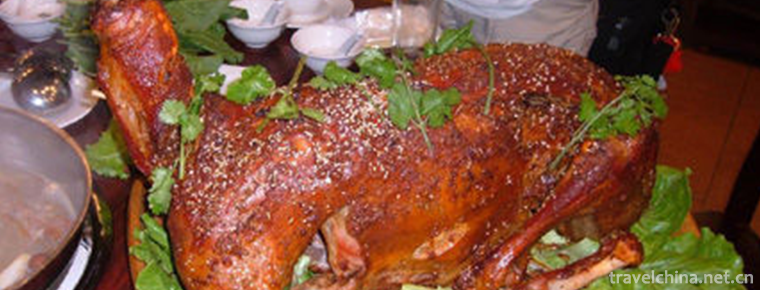
-
sate noodles
The only disciple chef Wang Daquan who teaches Shacha Noodle recipe by the master of Southern Fujian cuisine Yang Jibo inherits the tradition and makes it flourish. The main ingredients of Shacha sauc
Views: 183 Time 2018-11-02 -
Huangpi Mulan Cultural Ecotourism Area
Wuhan Huangpi Mulan Cultural Eco-tourism Area is located in Huangpi District, Wuhan City, Hubei Province, including Mulan Mountain, Mulan Tianchi, Mulan Grassland
Views: 222 Time 2018-12-12 -
The ancient city of Hetuala
The ancient city of Hetuala is located in Yongling Town, Xinbin Manchu Autonomous County, Liaoning Province. It is 5 kilometers west of Qingyongling
Views: 214 Time 2019-01-13 -
Green Island Tourist Villa
Green Island Tourist Villa is one of the eight new scenic spots in Chaozhou, the national demonstration sites of leisure agriculture and rural tourism, the base of science and technology
Views: 110 Time 2019-02-06 -
Qingdao Seaside Scenic Spot
Qingdao Seaside Scenic Spot is the first batch of state-level scenic spots announced by the State Council in 1982, and also the first batch of national AAAA-level scenic spots.
Views: 247 Time 2019-02-07 -
Traditional Building Techniques of Beijing Siheyuan
Beijing quadrangle traditional craftsmanship, Beijing local traditional handicraft, one of the national intangible cultural heritage.
Views: 679 Time 2019-04-04 -
play and sing at the same time
To play and sing is to accompany with instruments and sing by oneself. Generally, guitar, piano and so on. In China, there are also folk instruments such as three strings and pipa.
Views: 215 Time 2019-04-25 -
Restoration Techniques of Ancient Architecture
Ancient buildings are an important part of historical relics in China. Protecting, restoring and renovating ancient buildings is one of the important tasks in the protection of cultural relics.
Views: 193 Time 2019-05-01 -
Weaving and Dyeing Techniques of Uygur Felts and Printed Fabrics
Uygur felt, printing and dyeing technology, Xinjiang Uygur Autonomous Region Turpan (now Turpan) local traditional skills, one of the national intangible cultural heritage.
Views: 309 Time 2019-06-26 -
Xiushan Folk Song
Xiushan folk song is the folk song of Xiushan Tujia and Miao Autonomous County. Folk songs are closely related to the people's lives of all ethnic groups in Xiushan. Through compiling folk songs, the
Views: 128 Time 2019-07-08 -
Recommended routes for Chengdu Giant Panda Base
Recommended routes for Chengdu Giant Panda Base,Recommended route (1.5 hour tour)
Views: 188 Time 2020-12-13 -
Sports in Yibin
In 2019, Yibin sports team (member) won 4 world-class gold medals, 15 national gold medals, 30 provincial gold medals, 38 silver medals and 41 bronze medals. The annual sales of sports lottery tickets reached 410 million yuan, and 15 million yuan of public w
Views: 332 Time 2020-12-18
